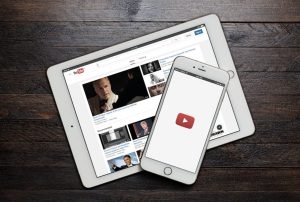As a demo and presentation skills coach, I have seen more than my fair share of software demos – along with their associated screens, tabs, search bars, drop downs, notifications and text fields. Some screens are so busy Lewis and Clark armed with a GPS would get lost! But even simpler interfaces often beg the question: “What the heck am I looking at?” in a seller’s haste to show how much their software can do in the allotted time.
The software demo best practice of quickly conveying tor your audience what they are seeing (and why it matters) is going the way of the Dodo, and that’s a costly mistake. Here’s why:
Like me, it is likely that your customer has never seen your software before. And the way you introduce a screen will significantly impact two key factors in moving the deal forward: your customer’s attention and their ability to understand how your solution will help them.
You can’t compete with your customer’s brain
Whenever a salesperson clicks on a new screen and immediately starts telling me how I can change the interface, create a report, do this, that, and the other, I tune out. Why? Because, like most people, put something on a screen and the human brain will instantly try to figure it out. “That’s what the brain is doing all day long — trying to understand what we’re looking at,” says Mary Potter, an MIT professor of brain and cognitive studies.
If you are not helping your audience understand what they’re looking at by actively guiding their eyes and ears, much of what you are saying is going to be lost. And that’s too bad, because you probably have a lot of great things to say!
What’s the solution? Get back to the basics with this best practice.
Software Demo Best Practice #1: How to Present a New Screen
- Tell your audience what they’re seeing – immediately.
Don’t describe all the wonderful, innovative things each tool can do, without first telling your audience what it is. The instant you land on that screen (or before), say “This is an Executive dashboard” or “This is your home page,” etc.” This allows your customer’s brain to quiet down as they can now put it into some kind of context. - Give your audience the “lay of the land.”
Describe the major sections on your screen so that your customer’s eyes don’t jump around of their own accord (which unguided, they certainly will.) Most people read left to right, so it’s a good idea to guide your viewer in that direction. - Point precisely to what you want your audience to see.
Don’t circle the general vicinity with your mouse a dozen times or land an inch from the graphic or metric you want them to see. Just like any good guidance system, accuracy matters. - Highlight a few key things.
Don’t try to cover every section, option or tab. This is not a training session and there’s no surer way to bore or confuse your audience. Instead, let your discovery inform what you show. Call out a few things that matter most to your audience. (Note: It’s also a good idea to address those things that are screaming for your audience’s attention in GIANT TYPE, bright colors, or splashy graphics, lest they wonder why you’re ignoring them.) - Explain why it matters.
Don’t assume that by showing your customer what your tool can do that value is obvious. For example, say your screen gives your customer a real-time picture of their sales funnel. That is not the value. The value is what your customer can do with the information, such as identify opportunities and challenges to increase overall sales. - Move your mouse slowly from one section to the next.
Trying to follow a speeding red or green dot can make one feel like an obsessed cat. Your audience is often a beat or two behind you, so go slower than feels comfortable and don’t get too far ahead.
Follow this Software Demo Best Practice and instead of “What the heck am I looking at?!” your audience will be asking “How soon can I have this?!”
Business & Finance Articles on Business 2 Community
(61)
Report Post





